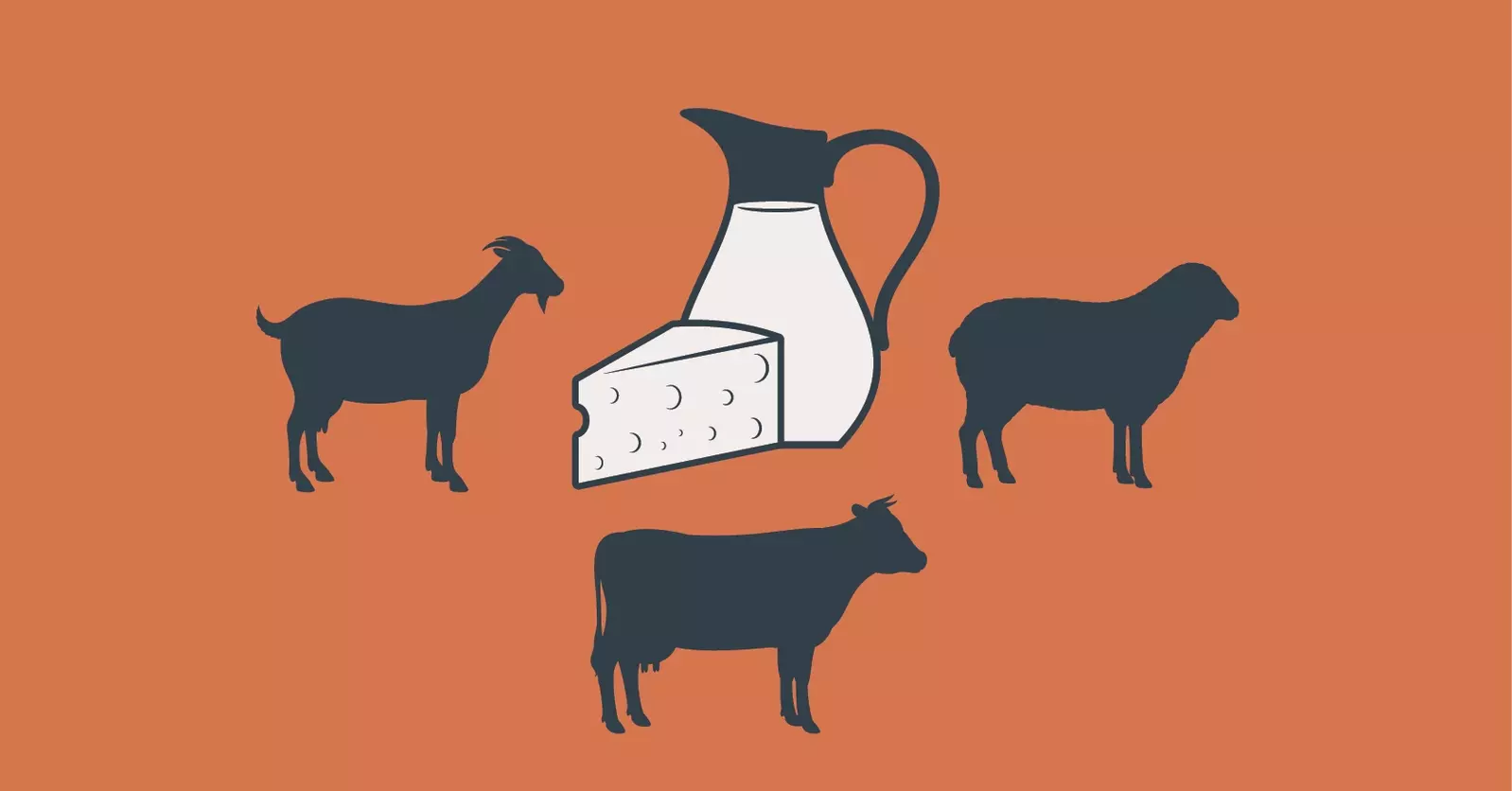I am often asked if A2 milk, which is milk from goats or sheep, is a good alternative to A1 milk, which is from Holsteins, the black and white dairy cows that predominate American dairy production.
The answer depends on the health issues of the person who will consume the milk and/or milk products.
There is a slight difference between A1 and A2 casein 1. During digestion of A1 casein, beta-casomorphin-7 is produced, which stimulates the opioid receptor in the brain, intestinal cells that line the gut, and immune cells in the gut. A1 milk has been associated with higher rates of autoimmune and neurological disorders. Digestion of A2 milk is less likely to produce beta-casomorphin-7, which has led to an increase in consumption of A2 milk and A2 milk products.
A recent meta-analysis reviewed the clinical trials, case series, and case reports of studies comparing A2 and A1 milk consumption2. Fifteen studies, 2 case-control studies, and 8 cross-sectional studies were included in the meta-analysis, which found little evidence that A2 milk had any health benefit over A1 milk. However, these were small pilot studies; there is moderate evidence that A2 milk is easier to digest than A1 milk and that liquid milk has different health effects than yogurt or cheese, but more research is needed.
Most of the studies on the health risks and benefits of milk have not discriminated between A1 and A2 milk. For some individuals, milk proteins have amino acid sequences similar to other protein structures elsewhere in their body. Through a process known as molecular mimicry, the immune system may become sensitized to milk proteins and begin making antibodies to attack and neutralize the milk proteins. Other structures in the body that have similar amino acid sequences may also be damaged. These other cellular structures include brain oligodendrocyte glycoprotein, which is important to repairing myelin, the insulation on the wiring between brain cell3. Milk consumption has been associated with higher rates of multiple sclerosis4chizophrenia5, type 1 diabetes, prostate cancer, and Parkinson’s disease6, though consumption of yogurt and cheese was associated with lower risk of type 2 diabetes7 and Alzheimer’s disease8. Kefir, yogurt, and cheese have significant health benefits and are better tolerated than liquid milk9.
In my clinical practice, I discuss milk with patients who have demonstrated gluten sensitivity, casein sensitivity, or milk sensitivity, including the severity of their adverse reactions. If they wish to try A2 milk, I suggest starting with several servings per day of cheese or yogurt made from one species of milk. In the first week, they watch for digestive symptoms, such as bloating, belly pain, or change in the bowel habits, and in the second week, I encourage them to monitor physical and mental health symptoms as well. If no symptoms develop, they can then try liquid A2 milk, again monitoring for gut, physical, and mental health symptoms. Some individuals tolerate yogurt and cheese but not milk.
Milk offers terrific nutrition, particularly for infants and very young children. Mammals have been nourishing their young with milk for over 200 million years, and humans have been nourishing their young with breast milk until they were weaned 250,000 years or approximately 84,000 generations. It is only in the last 8,000 years or 400 generations that some societies have included milk in the diet after the child was weaned.
Milk contains protein, which every diet needs—but I want my patients to know that milk is not a required food after weaning. There are plenty of other sources of protein and calcium.
Our ancestors consumed a lot more green leafy plants a good source of calcium and magnesium. Plus our ancestors were much more physically active than modern humans. They also had much more calcium in their bones than modern humans. The main driver of bone density is weight-bearing exercise and sufficient vitamin D and vitamin A. I encourage strength training coupled with some vertical jumps to maintain healthy bone mineral density.
It is quite possible to maintain healthy bones without milk.
Eliminating dairy can be difficult—we all have food addictions and behavior patterns that are hard to change. If you are ready to make the change, and could use some extra support, my advice would be to take my Autoimmune Intervention Mastery Course (AIM). It’s more than just an overview of The Wahls Protocol®. This course is shaped around a proven behavior change model that I have used in my clinical practice and research studies.
Learn more about AIM and enroll in our next coaching session today!
Kay SS, Delgado S, Mittal J, Eshraghi RS, Mittal R, Eshraghi AA. Beneficial Effects of Milk Having A2 beta-Casein Protein: Myth or Reality? _J Nutr._ 2021;151(5):1061-1072.
Kullenberg de Gaudry D, Lohner S, Schmucker C, et al. Milk A1 beta-casein and health-related outcomes in humans: a systematic review. _Nutr Rev_.2019;77(5):278-306.
Vojdani A. Molecular mimicry as a mechanism for food immune reactivities and autoimmunity. _Altern Ther Health Med._2015;21 Suppl 1:34-45.
Malosse D, Perron H, Sasco A, Seigneurin JM. Correlation between milk and dairy product consumption and multiple sclerosis prevalence: a worldwide study. _Neuroepidemiology._ 1992;11(4-6):304-312.
Niebuhr DW, Li Y, Cowan DN, et al. Association between bovine casein antibody and new onset schizophrenia among US military personnel. _Schizophr Res._ 2011;128(1-3):51-55.
Gerstein HC. Cow’s milk exposure and type I diabetes mellitus. A critical overview of the clinical literature. _Diabetes Care._ 1994;17(1):13-19.
Alvarez-Bueno C, Cavero-Redondo I, Martinez-Vizcaino V, Sotos-Prieto M, Ruiz JR, Gil A. Effects of Milk and Dairy Product Consumption on Type 2 Diabetes: Overview of Systematic Reviews and Meta-Analyses. _Adv Nutr._ 2019;10(suppl\_2):S154-S163.
Zhang X, Chen X, Xu Y, et al. Milk consumption and multiple health outcomes: umbrella review of systematic reviews and meta-analyses in humans. _Nutr Metab (Lond)_. 2021;18(1):7.
Shiby VK, Mishra HN. Fermented milks and milk products as functional foods–a review. _Crit Rev Food Sci Nutr._ 2013;53(5):482-496.









